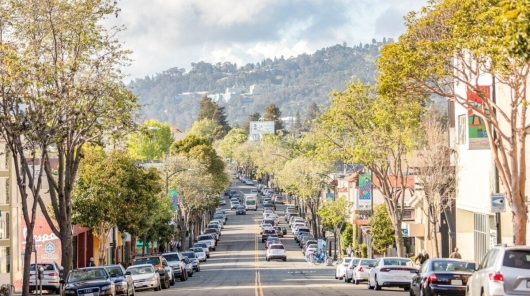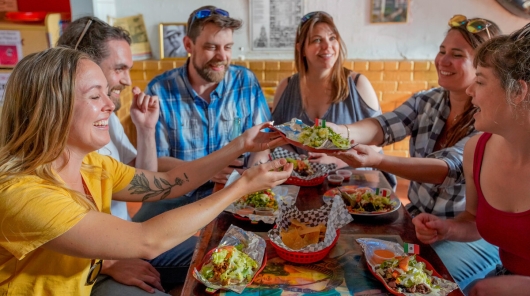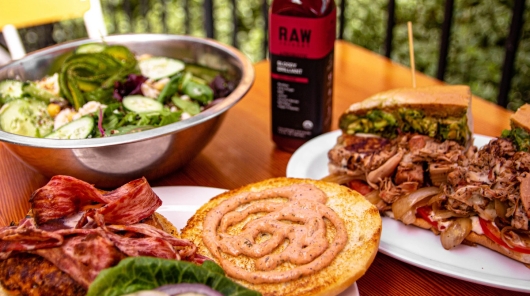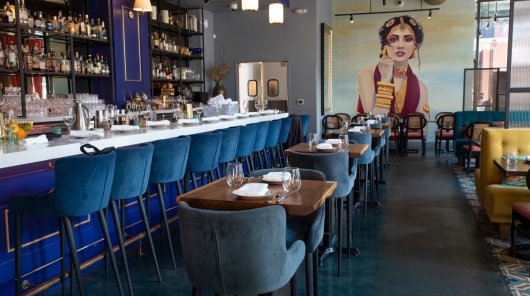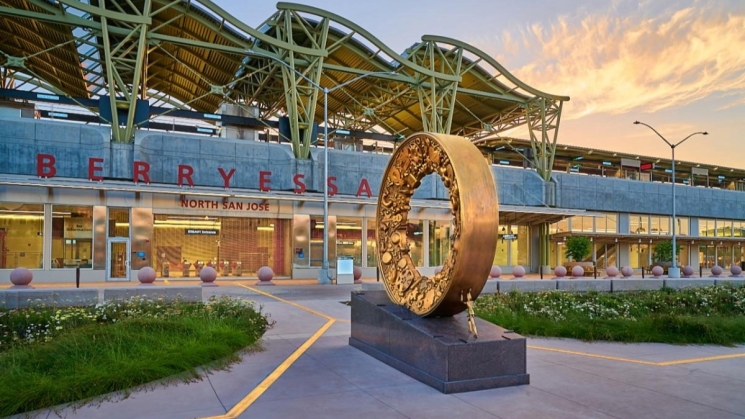
BARTable Walk: Berryessa / North San José
When:
On a nice day
Where:
1620 Berryessa Rd
San Jose, CA 95133
United States
Walk Time:
4.5-5 hours“Life!” (2020) by Larry Kirkland outside the main entrance of the Berryessa / North San José BART Station. Photo courtesy of the City of San Jose.
Travel around the world in a day - from China to Mexico and Portugal to Japan - on this BARTable Walk through Downtown San José. No passport is required - just sturdy walking shoes and a sense of adventure!
Route Map
Berryessa / North San José to Berryessa / North San José
You may be surprised to learn that San José is one of the most diverse cities in the country. It has one of the biggest overseas Vietnamese communities and more than a third of residents identify as Hispanic. And according to a 2023 report by WalletHub, San José ranks number nine on its list of the most culturally diverse cities in the U.S. - beating out both Oakland and San Francisco! This walk takes you through a few neighborhoods of the communities which contribute to that diversity. Be sure to come back and explore more.
To start the walk, exit the Berryessa / North San José Station through the main entrance onto Berryessa Station Way. Cross the street to the parking lot, turn right down the path to the sound wall into the townhouse development, and make a left onto Salamoni Court. Cross Lundy Avenue and take the Upper Penitencia Creek Trail to Mabury Road, then turn left. Cross again at Educational Park Road and follow it on the left side past the high schools and library. At Schulte Drive, veer left into the parking lot and entrance to Overfelt Gardens Park. This 33-acre community park opened in 1966 on land donated by Mildred Overfelt in memory of her parents. The Overfelts were early city pioneers and bought the land in the 1850s to start a grain and dairy farm. Mildred was born on the farm in their family home, which still stands in the park today.
Within the park in the southeast corner (straight ahead and to the left) is the Chinese Cultural Garden, started in 1971 through a partnership between the city and residents Frank and Pauline Lowe. Frank Lowe, an immigrant from China, envisioned a peaceful space that would celebrate Chinese culture, architecture, and philosophy, and also serve as a bridge between Eastern and Western societies. A popular setting for wedding photos, highlights include the Friendship Gate, Sun Yat-Sen Memorial Hall, Chiang Kai-shek Pavilion, a statue of Confucius, and a 15-ton black stone (said to be at least one million years ago) that was mined from Taiwan and gifted by Tainan, one of San José's sister cities (open every day, 10am – Sunset).
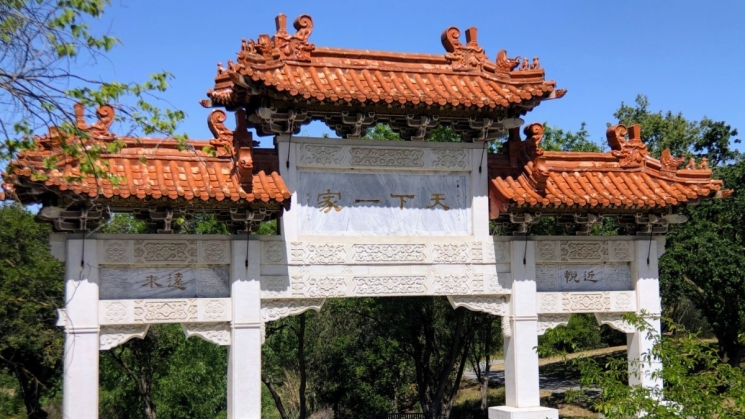 The Friendship Gate in the Chinese Cultural Garden is 40 feet high by 50 feet wide and is made of materials shipped from China, including 500-year-old juniper wood. The characters above the center portal translate to “All under heaven are one family.” Photo courtesy of Guy Joaquin.
The Friendship Gate in the Chinese Cultural Garden is 40 feet high by 50 feet wide and is made of materials shipped from China, including 500-year-old juniper wood. The characters above the center portal translate to “All under heaven are one family.” Photo courtesy of Guy Joaquin.
Meander through the garden, then exit the park through the south gate in front of the restrooms onto McKee Road and head right. Take a left across McKee at Checkers Drive, then a right onto Arroyo de Oro. At the end of the street, take the pedestrian bridge over the creek and head through Plata Arroyo Park to North King Drive, then take a left and head down into Mayfair, a Chicano/Mexican-American neighborhood since the early 1900s.
At Alum Rock Avenue, cross over to the Mexican Heritage Plaza. The plaza is home to the Centro Cultural de San José, a Chicano/Mexican-American cultural center. It was built in 1999 on the site of an old Safeway where labor leader and civil rights activist Cesar Chavez organized one of his first grocery store boycotts to protest the low pay and poor working conditions faced by grape growers in the 1960s. Chavez actually lived in the neighborhood with his family in the 1950s. The plaza features a theater, classrooms, meeting spaces and gardens. Near the bell tower, check out the mosaic tributes set into the ground to Chicano and Mexican-American artists Carlos Santana, Luis Valdez, Los Tigres del Norte and Linda Ronstadt.
 The mural “Corazon y Espiritu de Mayfair” (Heart and Soul of Mayfair) on the Mexican Heritage Plaza’s King Road wall was created in 2004 by San Francisco-based Precita Eyes Muralists to celebrate the neighborhood. Photo courtesy of Guy Joaquin.
The mural “Corazon y Espiritu de Mayfair” (Heart and Soul of Mayfair) on the Mexican Heritage Plaza’s King Road wall was created in 2004 by San Francisco-based Precita Eyes Muralists to celebrate the neighborhood. Photo courtesy of Guy Joaquin.
Continue west (to the right as you face the Mexican Heritage Plaza) down Alum Rock Avenue over Highway 101 where it turns into E. Santa Clara Street and step into Little Portugal, another historic neighborhood, established by Portuguese immigrants, mainly from the Azores, who came to the Santa Clara Valley in the 1850s. Though the Portuguese population has diminished over the last several decades, it remains the center of the local Portuguese-American community and is still home to numerous Portuguese-American social organizations and businesses, including Adega, San José's first Michelin-star restaurant.
Stop in at L&F Fish Market to stock up on Portuguese specialty goods, from wines and cheeses to bacalhau (dried and salted cod) and traditional baked goods and pastries, like pasteis de nata (Portuguese egg custard tarts). The market has served the community since 1976 and is still family-owned, run today by the founder’s son who is also its fishmonger, selecting and handling the daily catch (Tuesday – Saturday, 8am – 3pm).
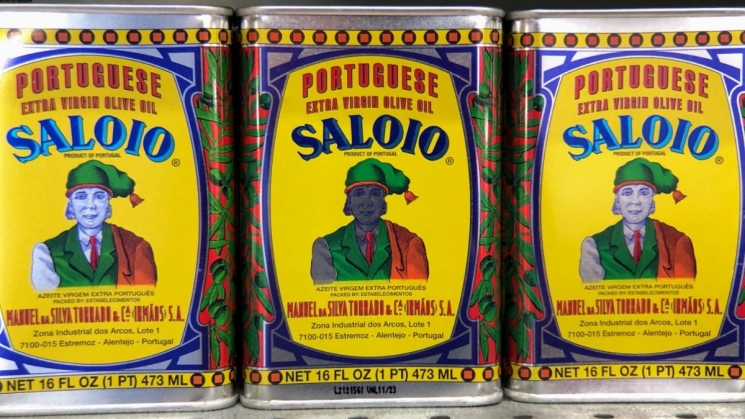 How about a Portuguese picnic? Gather your provisions at L&F Fish Market. Try some chouriço (smoked sausage), conservas (tinned seafood), queijo São Jorge (Azorean cheese), papos secos (wheat buns), and perhaps a vinho verde (young wine). Bom proveito! Photo courtesy of Guy Joaquin.
How about a Portuguese picnic? Gather your provisions at L&F Fish Market. Try some chouriço (smoked sausage), conservas (tinned seafood), queijo São Jorge (Azorean cheese), papos secos (wheat buns), and perhaps a vinho verde (young wine). Bom proveito! Photo courtesy of Guy Joaquin.
Directly across the street from the market is the Five Wounds Portuguese National Parish. Named for the five piercing wounds that Jesus received during his crucifixion, the church was founded by Portuguese immigrants in 1914 (mass is still held in Portuguese on weekends). Don’t miss the stunning stained glass windows from the inside. A 28th Street/Little Portugal Station is planned just behind the church as part of the Silicon Valley BART Extension Program.
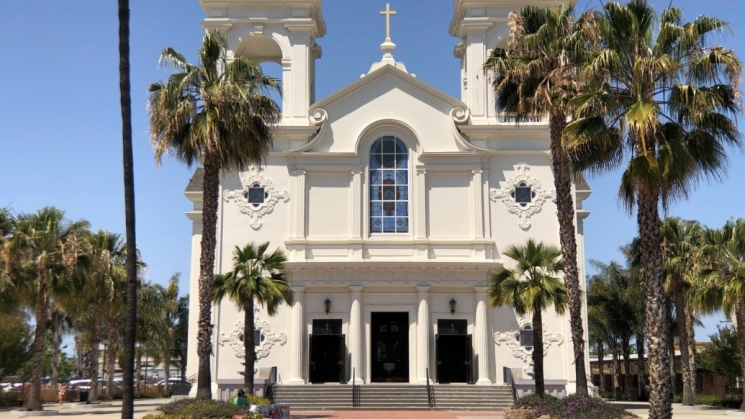 If you think the Five Wounds Portuguese National Parish looks like it’s been plucked from Europe, you’d be right. It was built with materials from Portugal that were originally used in the Portuguese Pavilion during the Panama-Pacific International Exposition of 1915. Photo courtesy of Guy Joaquin.
If you think the Five Wounds Portuguese National Parish looks like it’s been plucked from Europe, you’d be right. It was built with materials from Portugal that were originally used in the Portuguese Pavilion during the Panama-Pacific International Exposition of 1915. Photo courtesy of Guy Joaquin.
Continue straight on E. Santa Clara Street and cross S. Sixth Street to San José City Hall. Now the sixth location for the city’s seat of government, this city hall was designed by Richard Meier, the architect also behind the Getty Center in Los Angeles, the Barcelona Museum of Contemporary Art and The Hague City Hall in the Netherlands. The complex comprises an 18-story tower, the city council chamber and a futuristic glass rotunda. The two-block public plaza features a water sculpture with a fountain granite seating and poles that spray cooling mist on hot days.
 The San José City Hall rotunda is 110 feet high and 100 feet wide (slightly wider than the US Capitol rotunda) and its exterior glass curtain wall is supported by tension cables and steel beams. Photo courtesy of Guy Joaquin.
The San José City Hall rotunda is 110 feet high and 100 feet wide (slightly wider than the US Capitol rotunda) and its exterior glass curtain wall is supported by tension cables and steel beams. Photo courtesy of Guy Joaquin.
From the rotunda, head up the left side of N. Fifth Street into Japantown. Also known as J Town, Japantown started in the late 1800s on the site of boardinghouses for Japanese men who immigrated to the area seeking general labor and farming jobs. Today, the neighborhood is bustling with restaurants, shops and small businesses.
Just past E. Empire Street is the Japanese American Museum of San José. Established in 1987, the museum houses permanent and rotating exhibits that showcase Japanese immigration to the United States, their leadership roles in local agricultural businesses, incarceration during World War II and contributions to communities along the West Coast. In 2010, the museum underwent a remodel and expansion to house more exhibits with artifacts from their collections and offer educational programs. Exhibits highlight the history of Japantown, sports in the community and farming history and innovations in the South Bay and Central Valley.
The museum’s main exhibit chronicles the forcible removal and incarceration of more than 120,000 persons of Japanese ancestry during World War II, authorized in 1942 by President Franklin D. Roosevelt through Executive Order 9066, following the bombing of Pearl Harbor. Individuals and entire families were first moved to temporary detention camps, called “Assembly Centers,” such as the one in San Bruno where the Tanforan shopping center is today and featured in BARTable Walk: Colma to San Bruno. There they waited before being transferred to one of 10 permanent, so-called “War Relocation Centers” in other parts of the West and Southwest (Thursday – Sunday, 12 – 4 pm; Adults, $8; Seniors and Students, $5; Free for children under 5).
 The JAMsj’s exhibit on Assembly Centers and Internment Camps during WWII displays artifacts from the camps, including a wash basin, window, door and barbed wire from the Tule Lake camp in Siskiyou County near the border with Oregon. Photo courtesy of Guy Joaquin.
The JAMsj’s exhibit on Assembly Centers and Internment Camps during WWII displays artifacts from the camps, including a wash basin, window, door and barbed wire from the Tule Lake camp in Siskiyou County near the border with Oregon. Photo courtesy of Guy Joaquin.
Continue into Japantown on N. Fifth Street and take a right onto E. Taylor Street. Go down a few blocks on the left-hand side to the Gordon Biersch Brewery for a taste of Germany. The first beer was bottled in 1997 in the 114,000-square-foot state-of-the-art facility, designed by co-founder Dan Gordon himself. Gordon, an alumnus of the world-renowned brewing school at the Technical University of Munich, partnered with restauranteur Dean Biersch and opened their first restaurant brewery in Palo Alto in 1988, long before the popularity of craft beer brewpubs. Gordon Biersch continues to adhere to the Reinheitsgetbot, the 500-year-old German Purity Law of beer, by using only the essential and finest ingredients: Hallertauer hops, two-row malted barley, a special yeast from Germany and water.
 Although tours are on pause, you can still enjoy their brew lineup outside at the Gordon Biersch Night Market with rotating food trucks, live music performances and artists and maker vendors. (Thursday, May – September, 5 – 9 pm, All ages, Free) Photo courtesy of Guy Joaquin.
Although tours are on pause, you can still enjoy their brew lineup outside at the Gordon Biersch Night Market with rotating food trucks, live music performances and artists and maker vendors. (Thursday, May – September, 5 – 9 pm, All ages, Free) Photo courtesy of Guy Joaquin.
Continue again down E. Taylor Street to finish the walk back at the Berryessa / North San José Station, with a visit first to the San José Flea Market. For over 60 years, this South Bay institution has provided the community with ways to make money selling their goods; save money on everyday items; and enjoy shopping, eating and entertainment. Certainly, no one believed more in the proverb, “One man’s trash is another man’s treasure,” than the market’s founder, George Bumb. He came up with the idea while working in the solid waste and landfill business and seeing all the usable items being thrown out. Inspired by swap meets in Los Angeles and Paris, Bumb opened the market on 120 acres of an old meat processing plant. Today, it’s still family-owned and much more than a place to buy household items, with entertainment options every weekend, including live performances, carnival rides, an arcade and carousel, playgrounds and restaurants. (Wednesday and Friday, free; Saturday, $3; Sunday, $5; Dawn to Dusk; Walk-in entry is at the north end of the BART station)
 With over eight miles of aisles and more than 6,000 vendors every week, you can find just about everything at the San José Flea Market – clothing, jewelry, artwork, books, toys, toiletries, fresh produce, tires, and the list goes on. Photo courtesy of Guy Joaquin.
With over eight miles of aisles and more than 6,000 vendors every week, you can find just about everything at the San José Flea Market – clothing, jewelry, artwork, books, toys, toiletries, fresh produce, tires, and the list goes on. Photo courtesy of Guy Joaquin.
Route Map
Berryessa / North San José to Berryessa / North San José
Variations and options
- Join a walking tour: For a deeper dive into Downtown San José, follow this Downtown San José Historic Walking Tour Guide or this San José Downtown Walking Tour.
- Take a hike: Continue on the Penitencia Creek Trail and jump onto the Bay Area Ridge Trail up to Alum Rock Park, Sierra Vista Open Space Reserve, and the ridgelines overlooking San José.
- Extend the walk: Visit more of San José’s historical and ethnic neighborhoods, such as Little Italy and Little Saigon.
- Hit the markets: On top of the Gordon Biersch Night Market, stick around for the Berryessa Night Market at the San José Flea Market for food trucks, live music, craft beer, artists, and more (Fridays, April – November, Free)
What to bring: Sturdy walking shoes and a daypack with water, bag lunch or snacks, sun protection, extra layers or rain gear. A smartphone is handy for maps and looking up info or taking photos. And, of course, your Clipper card or Clipper card app!
About the station
Berryessa / North San José Station opened for BART train service in June 2020. Built by the Valley Transportation Authority, it is an intermodal station with bus service and car and bike parking. It is also the southernmost station in Santa Clara County until the completion of the Silicon Valley BART Extension Program that will bring service into Downtown San José and Santa Clara. “North San José” was added to the station name at the request of the San José City Council to signal riders that they are in the “Capital of the Silicon Valley.”
We're social.
What's your favorite part of this walk? Let us know via social media, @SFBARTable #SFBARTable! Keep up with us on Facebook and Instagram to see all of the best BARTable events, places to eat and have fun around the Bay.
